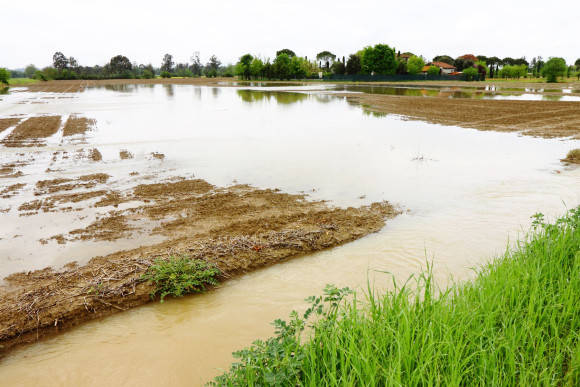Record-shattering spring showers across Oklahoma have replenished lakes and reservoirs, helped farmers recover from a difficult year and eliminated any traces of a devastating drought that had gripped the state for five years.
The latest figures from the U.S. Drought Monitor show only a sliver of the far western Panhandle — less than 2 percent of Oklahoma’s land mass — remain categorized as “abnormally dry.” Just three months ago, more than 68 percent of Oklahoma was suffering from drought conditions ranging from moderate to exceptional. Another 15 percent was categorized as abnormally dry.
“Oklahoma and Texas really know how to flip the switch,” said Brian Fuchs, a climatologist with the National Drought Mitigation Center in Nebraska. “When you go from a multi-year drought to be on pace for a record year for rainfall … typically we don’t see droughts end that quickly.”
In Texas, where less than 1 percent of the state in the Panhandle remains in a moderate drought, nearly half the state was abnormally dry or in drought conditions three months ago.
The drought that ended was a significant one that lasted for nearly five years and approached Dust Bowl levels in terms of high temperatures and lack of rainfall, Fuchs said.
“When we start looking at it in a historical context, there will be parts of Oklahoma where this will go down as the drought of record,” Fuchs said. “We did approach some statistical readings as far as precipitation and even some temperatures that really ranked right up there with the worst drought periods that not only Oklahoma, but really the entire country has seen.”
Rainfall totals in Oklahoma and Texas both shattered previous records for the wettest month. The 14.06 inches of average rainfall across Oklahoma in May easily surpassed the previous record of 10.75 in October 1941, according to Oklahoma state climatologist Gary McManus.
Meanwhile, Texas reported a statewide average of 8.93 inches in May, which is far more than the previous record wettest month in June 2004 with 6.66 inches, according to the Office of the State Climatologist at Texas A&M University.
“A month like that can really knock the stuffing out of a drought,” McManus said.
Oklahoma also remains on pace to have the wettest year ever in terms of statewide average rainfall. Through July 9, Oklahoma has had 33.16 inches of rain, ahead of the current wettest year in 1957 when 32.91 inches fell during the same period, McManus said.
And while forecasters predict a good chance for continued wet weather patterns through the fall and winter, Fuchs said it’s always possible dry, windy conditions can turn things around quickly and start to dry out pastures and farmland again.
“The forecast is not looking that way, but it could be something that starts to happen with a lot of high temperatures and dry, windy conditions,” Fuchs said. “It’s never out of the realm of possibility.”
Was this article valuable?
Here are more articles you may enjoy.



 London Firms Are Letting More Staff Work Entirely From Home
London Firms Are Letting More Staff Work Entirely From Home  Southeast Seas Rising Faster Than Other Regions, ‘Turbocharging’ Floods, Report Finds
Southeast Seas Rising Faster Than Other Regions, ‘Turbocharging’ Floods, Report Finds  Insurer Chubb Readies $350M Payout Tied to Baltimore Bridge Collapse
Insurer Chubb Readies $350M Payout Tied to Baltimore Bridge Collapse  Berkshire’s ‘Most Important’ Biz Drives Q1 Results; GEICO Still Behind on Tech
Berkshire’s ‘Most Important’ Biz Drives Q1 Results; GEICO Still Behind on Tech 


